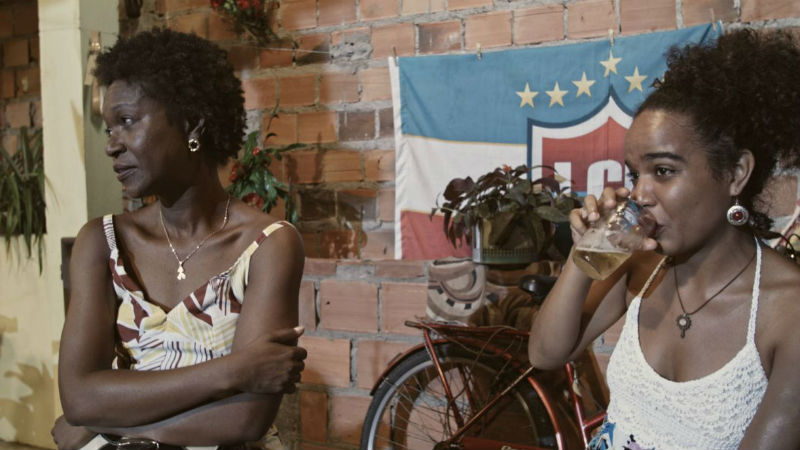




It all starts with a very simple and effective device. The viewer is drawn into the central story through the home video of a child’s birthday, Margarida’s (Valdineia Soriano) son. We could be watching a little piece of our own family history. The sheer candidness brings us close to the story and the people that populate it. This flashback of memories is interwoven with the present day and we gradually discover that the young boy died a while ago and Margarida lives alone with only her grief as a companion.
Everyday tasks are an uphill struggle for a woman who has withdrawn to the four walls of her small house. She is unable to feed or nourish herself adequately and marks out time with cigarettes and coffee. The director Rosa and Nicacio use a range of slightly surreal imagery to paint the inner life of Margarida. The walls of her house appear to be closing in on her, tangled weeds grow up the walls, stifling the air and pressing in on this mournful woman. Blood runs down the walls and we hear one of the neighbours say “She died together with the boy”.

The spice in the tale is generously sprinkled as we dip in and out of social gatherings and see the larger than life Cida (Arlete Dias) holding court with her stories, full of life and possibly a little too much to drink. Violetta (Aline Brunne) is played with great range and sensitivity, her optimism in every situation that presents itself shines out from the screen. She makes money selling her home-made coxinhas, feeds and bathes her ailing grandmother and makes a life with her husband Paulo (Aldi Anunciacao). The couple provide comfort and care to those around them. Paulo movingly tells Viola’s Grandmother “I miss talking to you, you know” as her life draws to a close. They both provide shelter to Ivan (Babu Santana) and his partners Adopho’s dog at a critical moment. This is a community that lives and dies together in the small mundane moments and the huge tragedies of life.
One of the strongest visual moments in the film (and there are many) is the split screen depicting a morning in this neighbourhood as all the residents wake up and begin their rituals and habitual activities. We see each home from inside the main room looking through an open door onto the street. The wider population of this community are never far from the story.
The journey of Margarida’s grief comes full circle as Violetta recognises her as the teacher she once knew. A vibrant woman who is now a shadow of herself. Love is an active verb in the hands of Violetta as she assists Margarida to return to the land of the living by cleaning her house with her and sharing chocolate. The demonstration of love draws Margarida gradually back into the world. Before venturing outside she opens her son’s room and finds courage to pack away each of the objects that remind her of him, tenderly touching each one.

Margarida tells Violetta what she thinks is a good film. We have seen her earlier in the story sitting silently in a movie theatre by herself. This is meta-language, and description bodes well for Coffee And Cinnamon as a whole: “A good film is one that shows the weaknesses, the limitations and the anguishes that everyone has. A good movie wants to try you and be tried, and when that happens you lose your ground, lose your shame, lose the line and transcend.
“It’s in the dark and in front of the image and dominated by the sound that you can finally confront yourself and listen to that which you never had the courage to say to yourself. And at that moment you find yourself. You find yourself and lose yourself all at once, without a mask or a disguise and even if it is just for a few minutes. When the film ends and the lights go on, everything is different, empty. That person that sat in that seat will never get up. That person who gets up is new, different.”
Overall, Coffee and Cinnamon is a relatable film brimming with honesty, humanity, and humour. It will show in in London soon, and it will also be available on VoD. So stay tuned!
















